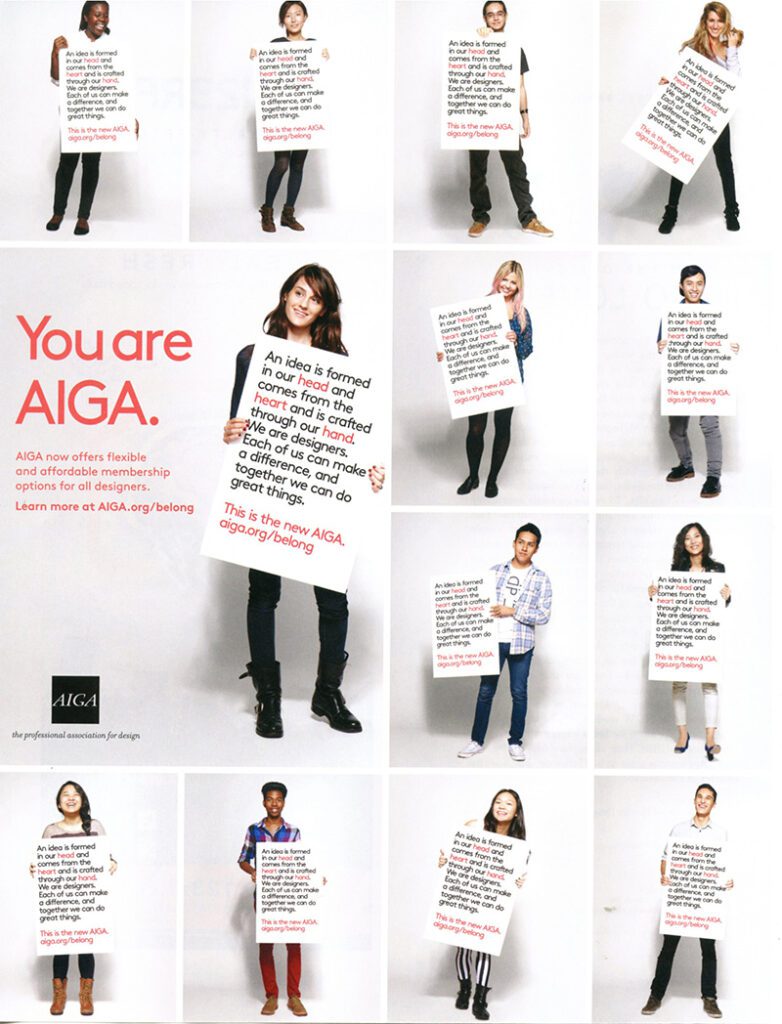- Questions?
- Contact
Functional vs. Emotional Benefits
In advertising, functional benefits, and emotional benefits represent two different ways of appealing to consumers:
- Functional benefits focus on what a product or service does. These are practical, tangible advantages—saving time, improving performance, lasting longer, or being more affordable. For example, a vacuum ad might highlight powerful suction or a longer battery life.
- Emotional benefits, conversely, connect with how the product makes the consumer feel. These are intangible and often tied to personal identity, values, or aspirations. For instance, a luxury car ad might emphasize feelings of prestige, confidence, or freedom rather than just horsepower.
Great ads often combine showing how the product works (functional) and tapping into why that matters to the consumer on a deeper level (emotional). This approach creates a more powerful and memorable message.
Advertisement Example

In the AIGA advertisement, we can see both functional and emotional benefits presented to the target audience. First, if you look at the designers present in the advertisement, you will notice that they are all younger. The use of young designers was an intentional choice because they are targeting young designers to join the profession. This ad focuses on the emotional benefit because AIGA wants to create a sense of belonging. Too often, designers, especially corporate designers, work in vacuums with themselves or 2-3 other creatives. Many designers would love the opportunity to connect with like-minded designers. They also target the functional benefit, which is elevating our design careers with networking opportunities.
References
OpenAI. (2025). ChatGPT-4o (Apr 11 version) [Large language model]. https://chat.openai.com/chat
- “Describe the difference between a functional benefit and an emotional benefit in advertising.”

